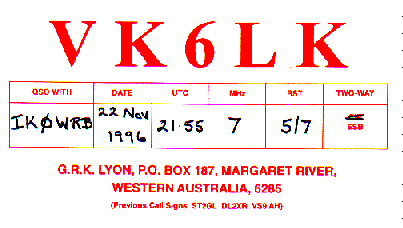 To switch between the two double-dipoles I use an Ameritron remote
switch (but when possibile I will try to get rid of it, because I
think it's better to have as few things as possible between tx
and antenna...).
To switch between the two double-dipoles I use an Ameritron remote
switch (but when possibile I will try to get rid of it, because I
think it's better to have as few things as possible between tx
and antenna...).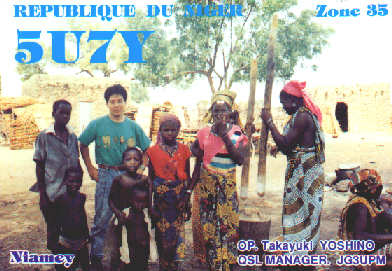 DX Century Club Award is given by
American Radio Relay League
to every radio amateur showing evidence of having contacted at least
100 different countries of the world.
DX Century Club Award is given by
American Radio Relay League
to every radio amateur showing evidence of having contacted at least
100 different countries of the world.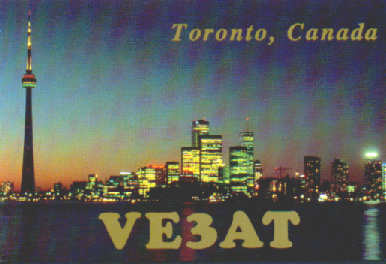 I am particularly proud of my DXCC certificates, because I used only
the output power of my rig, a Kenwood TS-450S, that is about 110 Watt
in CW mode, 85 Watt PEP in SSB and 50 to 100 in RTTY (depending on
my decision on how to operate). These are precise values measured some
years ago on a Bird wattmeter... by the Post officers who came in to check
my station, called by someone living in my building - the check-in ended well
and I said thank you to the officers, HI.
I am particularly proud of my DXCC certificates, because I used only
the output power of my rig, a Kenwood TS-450S, that is about 110 Watt
in CW mode, 85 Watt PEP in SSB and 50 to 100 in RTTY (depending on
my decision on how to operate). These are precise values measured some
years ago on a Bird wattmeter... by the Post officers who came in to check
my station, called by someone living in my building - the check-in ended well
and I said thank you to the officers, HI.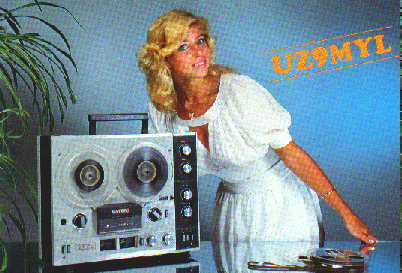 First antenna I used was a 80/40 m trapped dipole,
whose traps were done by printed circuit board pieces (to built capacitors) and
copper wire for the coils. Tuning were done modifying the total length
of the coils and a but also the length of wires, checking on the radio the
effects (this for fine tuning, by the way). I had amazing results on all
HF bands, I had main resonances on 80 and 40 and several others around.
Tuning a bit, with Kenwood internal tuner, you could work everything!
It's worth noting that at the time sunspot number was far higher than now.
First antenna I used was a 80/40 m trapped dipole,
whose traps were done by printed circuit board pieces (to built capacitors) and
copper wire for the coils. Tuning were done modifying the total length
of the coils and a but also the length of wires, checking on the radio the
effects (this for fine tuning, by the way). I had amazing results on all
HF bands, I had main resonances on 80 and 40 and several others around.
Tuning a bit, with Kenwood internal tuner, you could work everything!
It's worth noting that at the time sunspot number was far higher than now.
I also built other wire antennas, such as 160m loaded dipoles (with huge
coils!), G5RV with an homebrew balanced line ending in a 4:1 balun,
multi-dipole configurations and a 60m length wire loop, that performed
surprisingly well on LF listening (I will try something similar to work on
137 kHz, perhaps this winter).
At the moment I have on my roof two multi-dipole antennas, a 80m dipole
resonating on 3750 kHz coupled on the same 1:1 balun with a 40m dipole
resonating around 7030 kHz (the resonances apply to the two antennas
system). The other antenna is similar: a 20m dipole coupled with
a 10m dipole.
 To switch between the two double-dipoles I use an Ameritron remote
switch (but when possibile I will try to get rid of it, because I
think it's better to have as few things as possible between tx
and antenna...).
To switch between the two double-dipoles I use an Ameritron remote
switch (but when possibile I will try to get rid of it, because I
think it's better to have as few things as possible between tx
and antenna...).
Recently I have built an horrible two element yagi for 6 meters band,
for now attached to a third Ameritron plug (yes, I know, I should not
do this way) and without rotor (it steadily beams NW). The 28 MHz
output of the Kenwood is fed to an Italian made 6m transverter and
then to a 6m PA (a tube 27 MHz PA I buyed for a few bucks at an hamfest
and modified to 50 MHz, simply changing input and output pi filters).
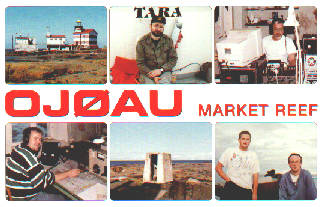 Well, after doing a lot of QSO the difficult part is how to get the
QSL
answered. ARI bureau works well, but you have sometimes to wait years
to receive a card back, so, as all DXers do, I began writing directly,
looking for managers and addresses on every possibile CD-ROM,
callbook, Internet sites, etc. And sending green stamps around, HI.
Well, after doing a lot of QSO the difficult part is how to get the
QSL
answered. ARI bureau works well, but you have sometimes to wait years
to receive a card back, so, as all DXers do, I began writing directly,
looking for managers and addresses on every possibile CD-ROM,
callbook, Internet sites, etc. And sending green stamps around, HI.